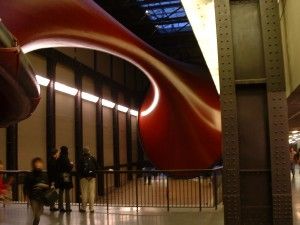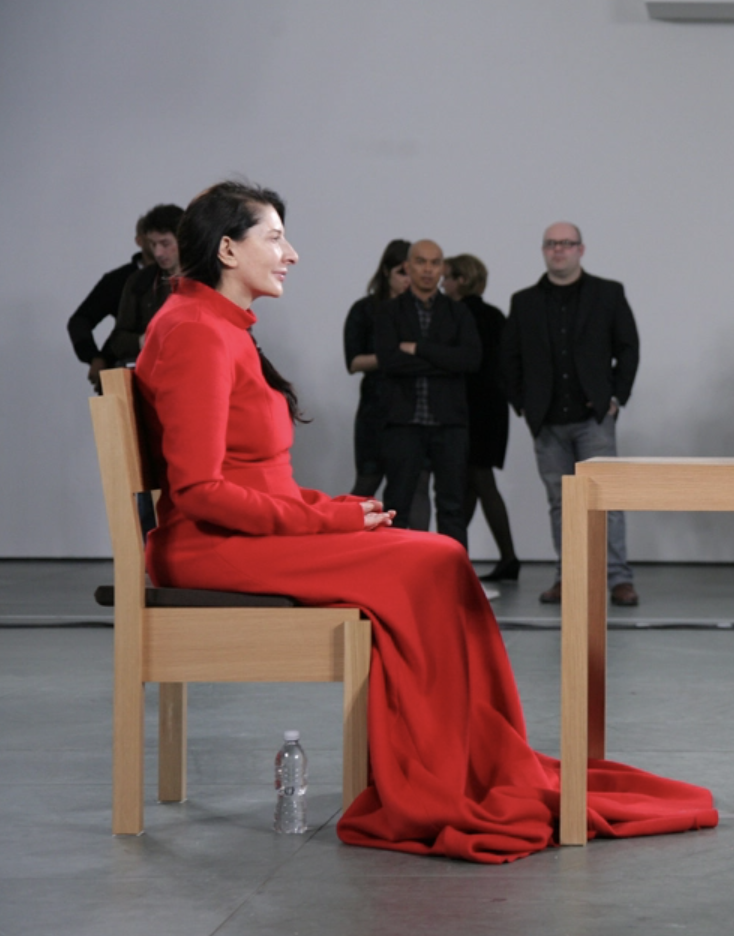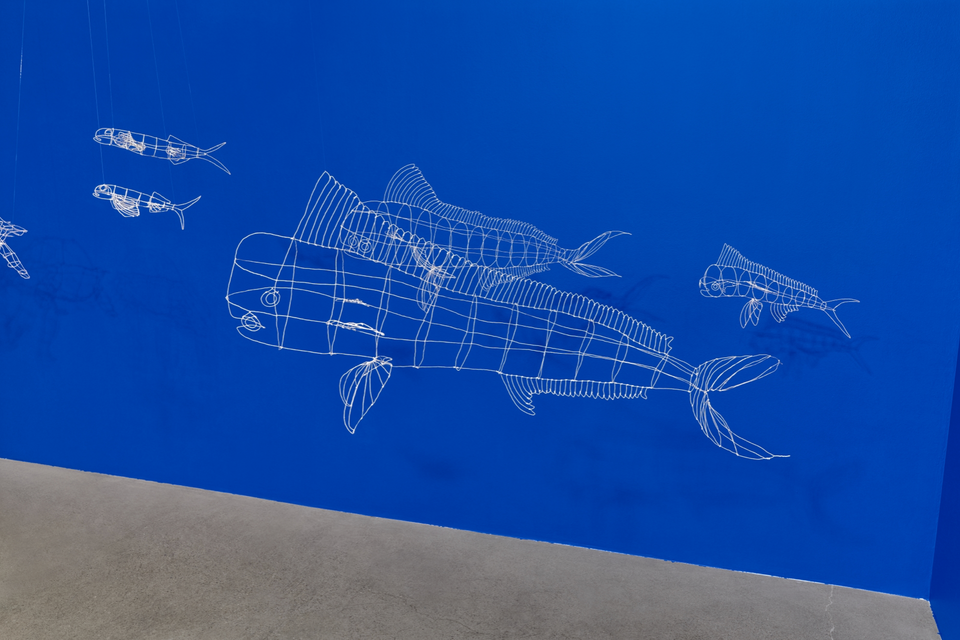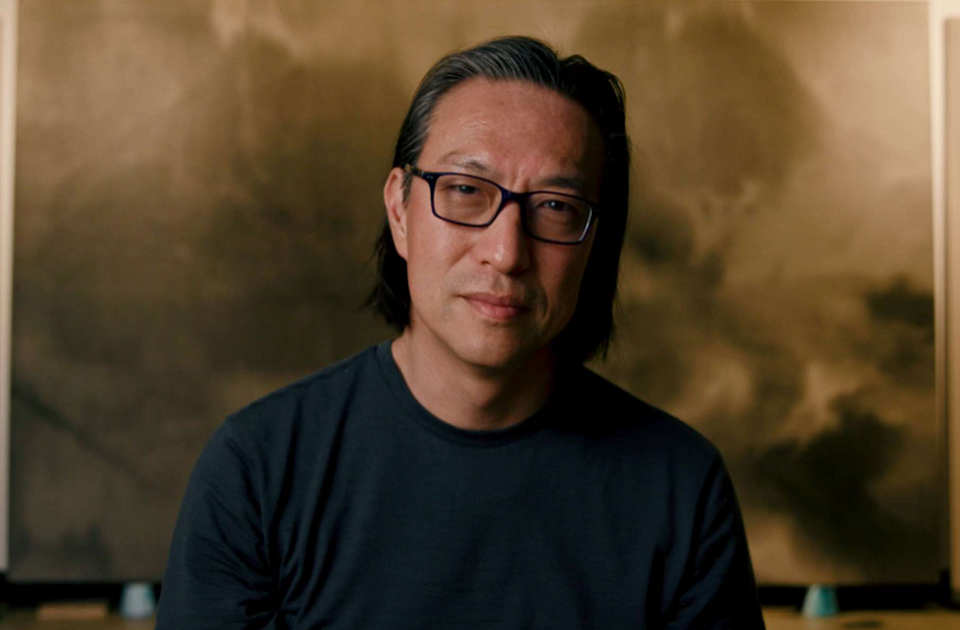In 2001, a work by Damien Hirst, an installation piece valued at six figures and consisting of, “a collection of half-full coffee cups, ashtrays with cigarette butts, empty beer bottles, a paint-smeared palette” and “newspaper pages strewn around the floor,” was efficiently disposed of by a cleaning man. Said that man, Emmanuel Asare: “As soon as I clapped eyes on it, I sighed because there was so much mess. It didn’t look much like art to me. So I cleared it all in bin bags, and I dumped it.”[1] “To mistake an artwork for a real object” wrote the philosopher Arthur Danto, “is no great feat when an artwork is the real object one mistakes it for.”[2] Yet these mistakes almost never occur inside the art gallery or museum. There, things are nailed down, and in the museum we are inspired to consider the ontological status of each artifact. In fact, if you have ever walked through a museum exhibiting art made in the last century, you have also exhausted yourself wondering whether and why that is art, moving from room to room in a frenzy of philosophy, haunted by the ontological question, seeing its face in every flower.

It is taken for granted that this has anything intrinsic to do with the actual appreciation of art. But if attempting to define art is a repeated fact of our experience ,with artworks it does not follow that it is a natural part of that experience, that it ought to be a part of it. Really, there are two sides: those on one side contend that the enjoyment of art and the contemplation of its nature are often one and the same thing; art is merely the handmaid to philosophy, exists just to illustrate it, and then, sometimes, in a circular coincidence, this philosophy is also about Art. The “impressive thing” they said about Warhol’s Brillo Boxes, was that they were “art at all.” Art about Art; art which, if it stood for anything, stood most remarkably for Art.[3] On the other hand, another school of thought maintains that appreciating art is about looking, that what counts is the art’s form, and it should be enjoyed and evaluated on that basis.
But okay—we’ve forgotten how to look. “More of us spend time in museums and art galleries than ever before” writes the critic Roger Kimball, “but how much time and attention is spent in informed and careful looking?”[4] It is, after all, relatively easy to drift through the museum on a cloud of philosophy—or inside it, in a fog—and easy to read labels and listen to audio tours, but looking? We don’t know how to look at art. Looking is hard. Looking hurts when we do it.
Fortunately, we have experts. We have critics and scholars whose educated example is drawing into greater focus an every gently-sloping foothill in the artworld panorama. Together, they compose our Peterson Guide to the arts.
About the work of Anish Kapor one expert has this to tell us:
The truly made work is thus enriched because it introduces into the expanded field of the object, that displaced movement of ‘thirdness’, the diagonal relation, that inscribes something that remains nameless, that something that moves the material beyond itself, towards the other, surviving at the point of invisibility, sustaining the unthought.[5]
What is going on here? There is no attentive analysis, no thoughtful observation, no well-founded interpretation, no art object at all — only dark abstractions in tightly woven obscurantism. The theoretical has finally eclipsed the object. A century ago the philosopher Clive Bell defined the art critic as a medium between public appreciation and cultural artifact: “To be continually pointing out those parts, the sum, or rather the combination, of which unite to produce [artistic] form, is the function of criticism…This [the critic] can do only by making me see…”[6] How things have changed! Academic trend, authorizing the reduction of artworks to models of theory, has seduced commentary into relationship with the quasi-philosophical. Ensnared in allegiance to the abstract and opaque, criticism bears little connection to sharpening public vision, even less to vision itself.
The review above has something to do with Anish Kapoor (a “something that remains nameless”). The public adores Anish Kapoor; his sculpture in Chicago, “Cloud Gate”—that delicious, molten bean—“is claimed to be the world’s most popular work of art” and Kapoor’s 2009 Royal Academy show was allegedly “the most successful exhibition by a contemporary artist ever seen in London.”[7] Perhaps this is because Kapoor’s work displays an uncommon sensuousness. A few years ago the artist became infatuated with a messy blood-red wax. Here it is, in one example, whittled into an immense wheel frozen in extrusion through the aperture of a blade that could have been lent by the Demon Barber of Fleet Street.[8] Kapoor’s relationship with the public and his work’s visual and tactile qualities augur scholarship with a plain-spoken, democratic feel and careful progression from observable qualities to outlying meanings. If observant and concrete literature on art is available, you would expect to find it in connection with Anish Kapoor. Instead, perception, description, experience—in short, aesthetics—are prejudicially shut out. Their going leaves a void. The title of the aforementioned review is “Making Emptiness.” Well then, tu quoque, brother.
There is more like this on the Tate Modern museum website, so theory is not confined, but displays itself in the most public places, embarrassing everyone. In 2002, Kapoor inflated one of his more monumental sculptures, Marsyas, inside Turbine Hall at London’s Tate Modern: a red polyvinyl web stretched trunk-like from a circular base and then split to effloresce at two ends in gaping sleeves. The sculpture filled the many-storied hall; visitors looked pitiful next to it. “Anish Kapoor,” a writer assays in a blurb by a photo of Marsyas, “is renowned for his enigmatic sculptural forms that permeate physical and psychological space…he has explored what he sees as deep-rooted metaphysical polarities: presence and absence, being and non-being, place and non-place and the solid and the intangible…”[9]
But it is unclear how the first statement is not totally vacuous. Certainly all objects “permeate physical and psychological space.” And although it may be true that Kapoor’s work deals with metaphysical themes, it is not possible that it is about “metaphysical polarities.” Metaphysics, as a theoretical science of objective fact, is limited to examining the facts of being or place, not the non-entities of absence or non-place.
Marsyas is a gargantuan sculptural installation, and because its form changes fundamentally with the perspective of its viewer it is difficult to describe. Kapoor, who is unfailingly philosophical, would probably say something about it such as: “Marsyas subverts the notion of “object” because it offers nothing objective to the common viewer at all, nothing singular or constant; the concept of Marsyas the sculpture changes all the time. Really, there is no Marsyas.”[10]
But Kapoor would be underselling himself because what is true of Marsyas at this level is also true of anything colossal. Perhaps the artist could acquiesce to something more earthly.
A prominent aspect of Marsyas is its deep, mouthy sleeves. Deep space is fascinating, and the sleeves, which are large enough to hold train cars, suck the eye up and into them like a flower drawing a bee. Without the ribbing in the polyvinyl, there would be less psychological force to the shape; the ribs act as vectors which propel the eye. The pull extends to the rest of the body and gazing up into a blossom produces an anticipation of suction: a vacuum could start in the belly of the sculpture behind its apertures and a blossom could tilt and bring you up inside it and you would never see your home or family again. Or, if you prefer, the sleeves are fluted like a trumpet or a gramophone, and a gigantic, rushing sound seems imminent. The form is imprecise, but the feeling in common is dread.
Because Marsyas is several stories high, it is surmounted by walkways and from there, apparently, a person can look down across the entire sculpture and take in both its massive trunk and the two brachial tubes that open into blossoms. The ribbing which pulses through the entire sculpture is especially felt along the tubular arms, where the symmetry of the arms reinforces the effect of their straining or being pulled from the main trunk: adding a third or fourth arm would have interrupted the sweep of the eye from end to end and mitigated the perceived tension along the sculpture’s back. Around the arms and trunk the contours of the sculpture are soft, but then the stems enlarge suddenly into forced mouths. It is unnatural that the delicate stems should gape into ellipses like a plated bottom lip. There is strain here, Kapoor wants to say, but it is traumatic, not therapeutic. It is coerced and terrible. The composer Arvo Part was inspired by Marsyas, wrote the elegiac “Lamentate” concerto, and performed the work beneath the sculpture in 2002. The fact feels like a corollary: we don’t need to know that the work’s title refers to a satyr “who was flayed alive by the god Apollo” to understand Part’s inspiration—Marsyas is full of violence.[11]
The preponderance of theory-based art in the last century has made philosophy inescapable, and we have forgotten how to look. “More of us spend time in museums and art galleries than ever before but how much time and attention is spent in informed and careful looking?”[12] It may be, as countless scholars are led to believe, that there is really nothing important to see, that theory is the noblest content of art, that the most profound and essentially artistic of truths occupy the precinct of ideation rather than experience. But then, how plainly works like Marsyas evince the contrary.
[1] Donald Kuspit, The End of Art (New York: Cambridge University Press, 2004), From a selection of epigraphs to the text.
[2] Arthur C. Danto, “The Artworld,” in The Philosophy of Art, eds. Alex Neill and Aaron Ridley (New York: Mc-Graw Hill, Inc., 1995), 205.
[3] Ibid., 581.
[4] Roger Kimball, Art’s Prospect (Chicago: Ivan R. Dee, 2003), 262.
[5] Homi K.Bhabha, “Making Emptiness,” Anish Kapoor, http://www.anishkapoor.com/185/Making-Emptiness-by-Homi-K.-Bhabha.html.
[6] Clive Bell, Art (New York: Capricorn Books, 1958), 18.
[7] Mark Hudson, “Anish Kapoor: Leviathan, Monumenta 2011, Grand Palais, Paris, Review,” The Telegraph, http://www.telegraph.co.uk/culture/art/art-reviews/8506594/Anish-Kapoor-Leviathan-Monumenta-2011-Grand-PalaisParis-review.html.
[8] Cf. http://www.anishkapoor.com/419/Dark-Brother.html.
[9] Tate Modern, http://www.tate.org.uk/modern/exhibitions/kapoor/default.htm
[10] Kapoor has titled at least three of his works Non-Object.
[11] Tate Modern, Op. cit.
[12] Roger Kimball, Op.cit.



